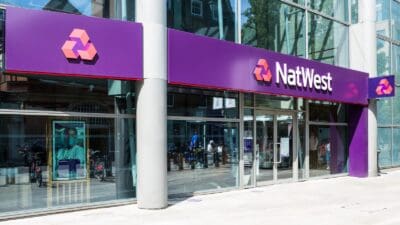While the FTSE 100 has largely recovered from a shaky start to 2016, Royal Bank of Scotland Group (LSE: RBS) has continued to underperform the index by a staggering 14% since the New Year. Just when RBS appeared ready to move on from years of restructuring and write-offs to return to profit, management announced last week several billion pounds of additional fines and payments would make 2015 the eighth year of losses in a row. Despite this bad news, the shift to a domestic-focused retail bank is going well with risk-weighted assets (RWAs) falling a further 3% in Q3 and capital buffers have been built up sufficiently to allow a return to dividend payments a full year ahead of schedule.
RBS continues to shed non-core assets such as its private banking arm and completed selling its final stake in the US Citizen’s Bank, further reducing RWAs and shoring-up capital ratios. While there will undoubtedly be further pain ahead for the bank in regards to further restructuring costs and regulatory fines in the US, management has done an admirable job of cleaning up the balance sheet and setting the stage for a return to growth at the state-backed lender. I wouldn’t be calling the bottom for shares yet, but with return on equity at the go-forward bank a solid 13%, there’s obviously room to grow for the group once it’s done cutting out non-performing divisions. With shares trading a price/book ratio of 0.27, compared to 0.91 at much healthier Lloyds, RBS looks like a high-risk, high-reward share that merits further investigation.
The Sainsbury factor
Argos and Homebase parent Home Retail Group (LSE: HOME) shares fell 4% on Friday when it was revealed that negotiations with J Sainsbury about the grocer’s takeover bid weren’t progressing as smoothly as shareholders hoped. With the £340m sale of DIY chain Homebase already lined up, Home Retail Group will be a largely-Argos-driven share if the Sainsbury’s deal doesn’t go through. Argos’s latest results saw same-store sales down 2.2% over the holiday period and full-year profits are expected to be towards the bottom of the already-downgraded £92m to £118m range. With earnings per share half of what they were five years ago and competition from the likes of Amazon not going away any time soon, I would certainly be hoping for the Sainsbury’s deal to go through if I were a shareholder.
Acquisition trail
AstraZeneca (LSE: AZN) has fully embraced the manic pace of acquisitions roiling the pharmaceutical industry and announced or completed some $7bn worth of deals in the final two months of 2015 alone. This shopping spree is necessary to refill the drugmaker’s pipeline as US patents on blockbuster drugs Nexium and Crestor, which account for 35% of revenue, expire by the end of this year. An ambitious target of increasing revenues by well over 50% to $40bn by 2023 will require continued acquisitions and increased R&D spend, which accounted for an estimated 20% of revenue this past year. Shares are certainly not cheap at 17 times 2016 forecast earnings, and the heavy capital expenditure necessary to meet revenue targets makes me view other pharma giants such as GlaxoSmithKline or Shire as more appealing options.







